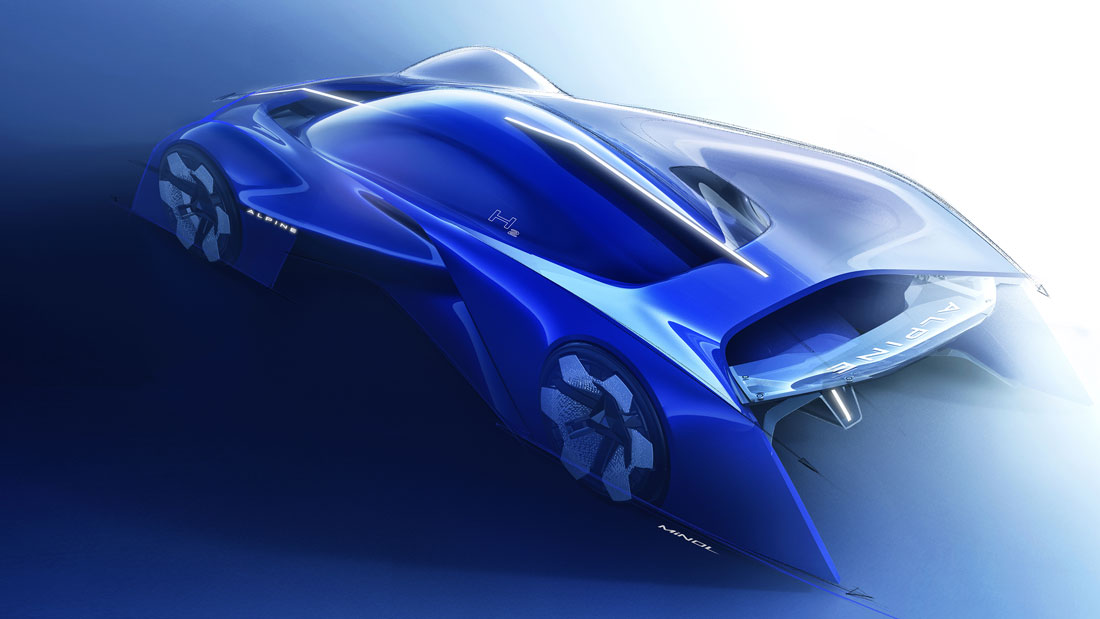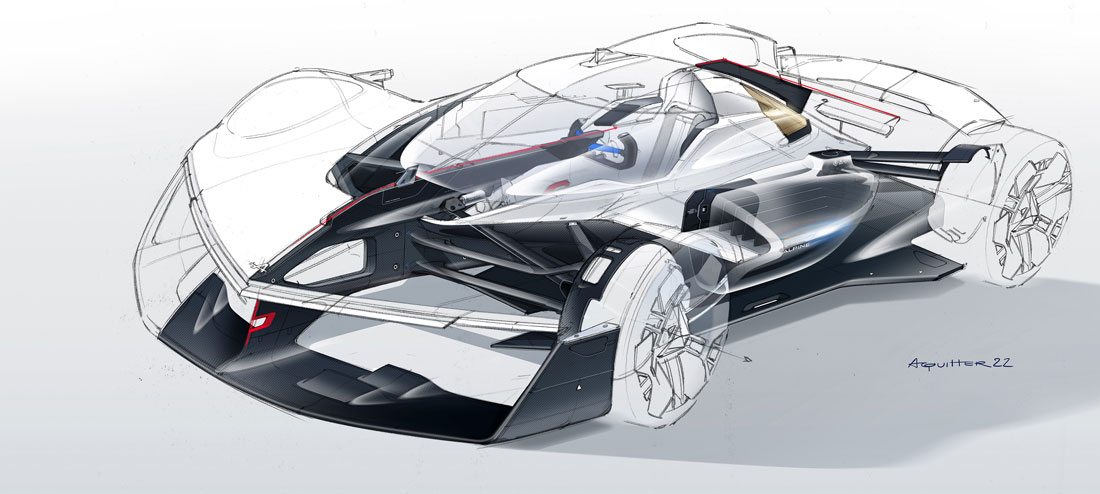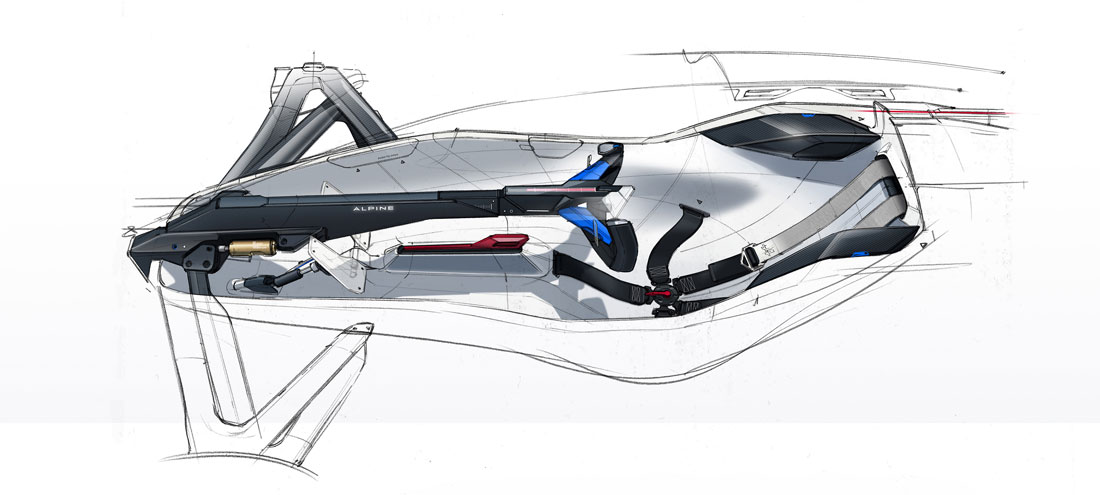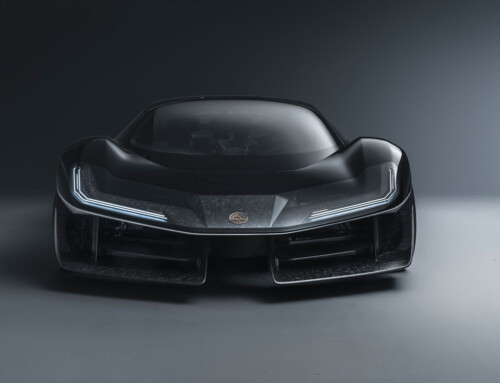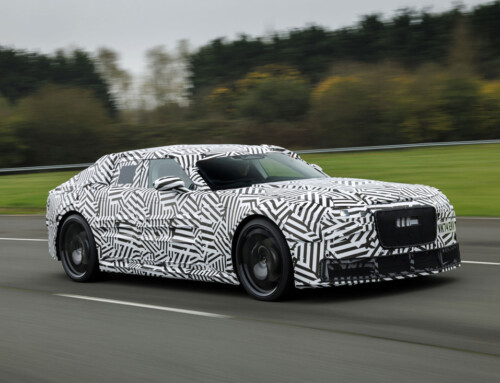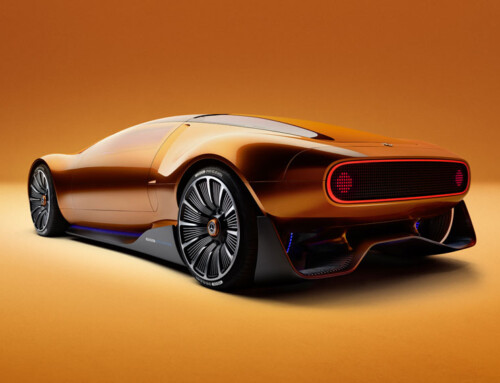Impervious, hazardous and technical. But also compelling, enjoyable and fulfilling. Those are what the roads of Europe’s highest mountain range look like in the imagination of drivers and the valuable inspirations they arouse in the minds of those who designed this prototype. “We wanted to show what we are capable of”, says Antony Villain, head of Alpine style. “The work team has grown from ten to thirty members in the past year, allowing us to put together a show car capable of making the public dream, as in the Shows of years gone by. Suffice it to say that it is as long and as wide as the cars of the Le Mans 24 Hours, so it is to all intents and purposes a reminder of our racing excellence”, he explains on the stand at the latest Mondial de l’Automobile in Paris.
Hydrogen sportiness
In this single-seater Alpine, the driver sits between two large longitudinal tanks of hydrogen, intended for combustion in an internal combustion engine that emits only water vapour. And it is precisely the gas, with its extremely clean chemical reaction, that creates an interesting first reference to the alpine microclimate that seems to hover over every inch of the bodywork: “We needed to be able to show the invisible. We noticed that water particles are reminiscent of the mist of winter mornings, when a thin layer of frost settles on the tarmac, so we exploited this connection” obtaining an ‘opaque transparency’, an incomplete ‘see-through’, which permeates the project and is perfectly represented by the semi-transparent cockpit.
Like a comet
Not only that: since the exhausts are close to the rear light clusters, the latter are illuminated with a bluish light “that resembles the tail of a comet”, while at the front a tone tending toward red “like the incandescence of a star” is adopted, thus justifying the name “Alpenglow”, which refers precisely to the reddish glow of mountain sunrises.
The principle of the rising sun, after all, underlies the idea of a new electric range (consisting of a small sports car, a C-segment crossover and the future A110) to be completed by 2026.
Modern and aggressive
On future production iterations, “as much of this prototype as possible will remain”, continues Villain: “In particular, the alternation between organic, fluid, liquid-metal-like portions and much sharper ribs, which create excitement and make the whole thing look modern and aggressive”.
Plastic shapes
Such extreme plasticity of forms, full of “negative to positive” variations, moreover, prompts one to ideally visualise a Luge athlete in the act of gliding aerodynamically and fast on the track, evoking perhaps the most significant content of the car: the aspiration for total fusion with the nature of the Alps, capable of encapsulating ecology (hydrogen propulsion) and history (the difficult rally itineraries of the 1970s). “Even the flakes on the wheels, which represent an additional state of water aggregation, are part of the message”.
Visionary interiors
Transparency also reappears in the large rear negative lift spoiler, shiny as an ice blade, and in certain original cockpit details (for now developed only in virtual views). Indeed, in the cockpit similar to “a driver staging”, a racing steering wheel complementted by two translucent gear shift paddles stands out, which provide the whole with an additional piece of ethereal identity, again reminiscent of the physical encounter with the elements. As if in a continuous dialogue with the spirit of one of France’s most important automotive epics.
(Full article in A&D no. 258)


